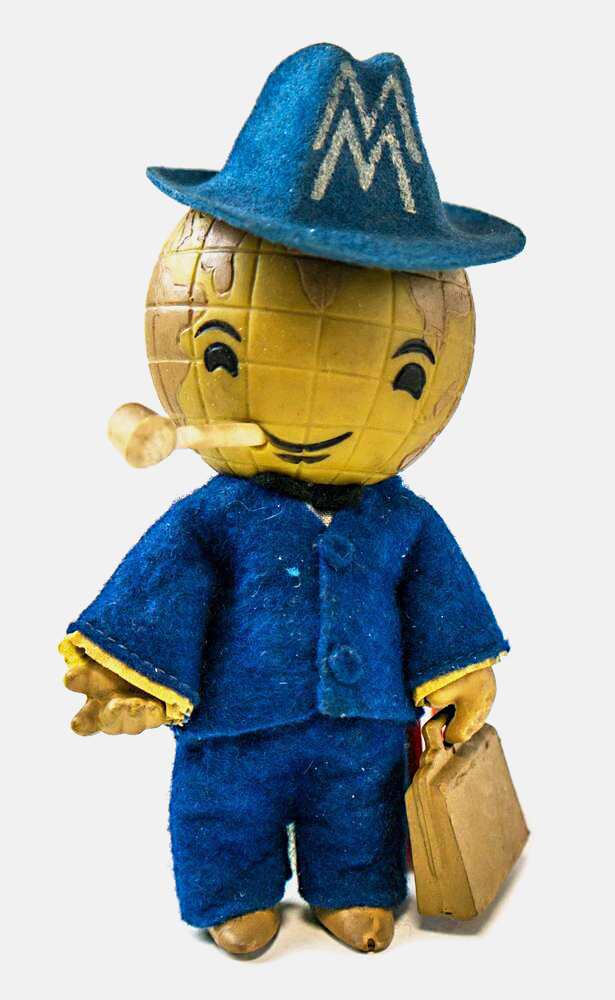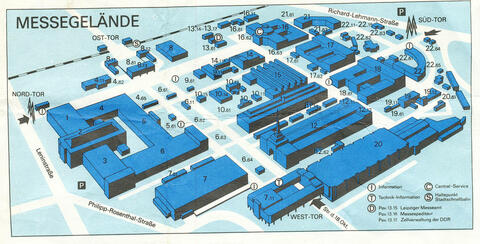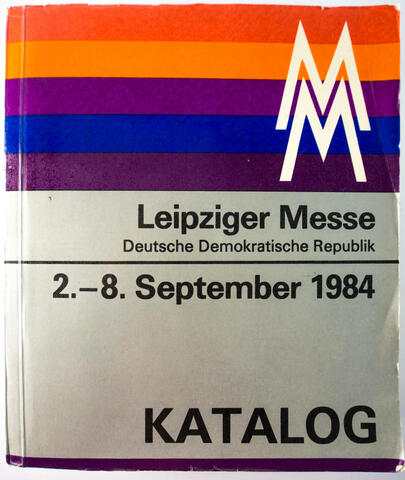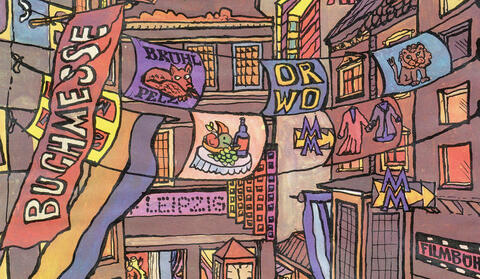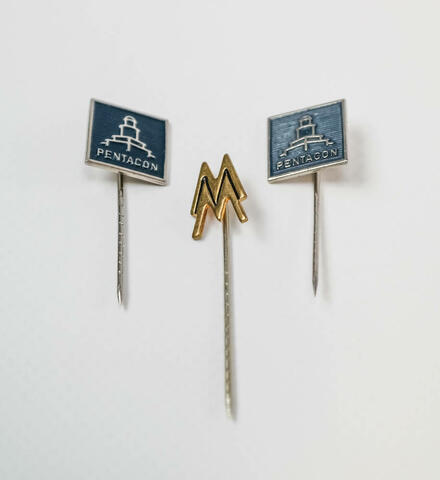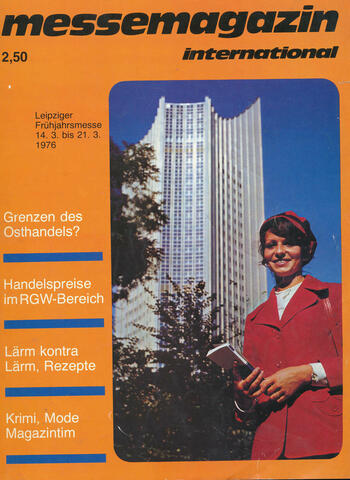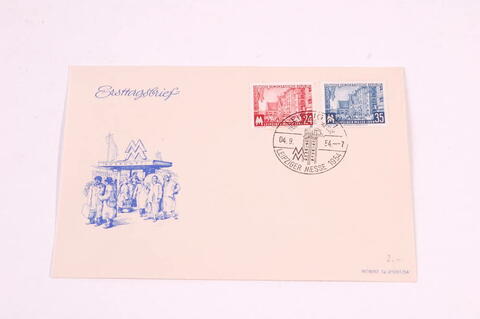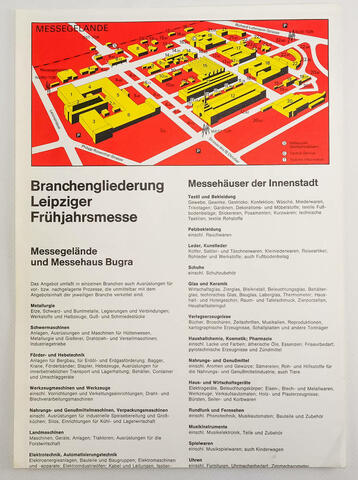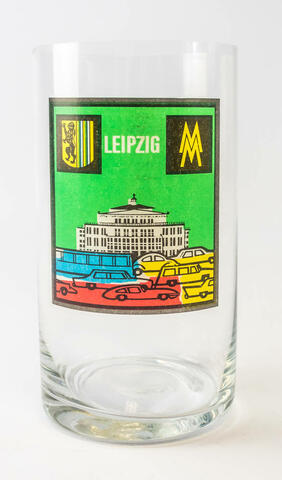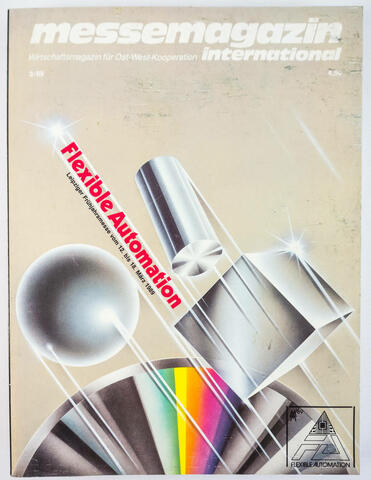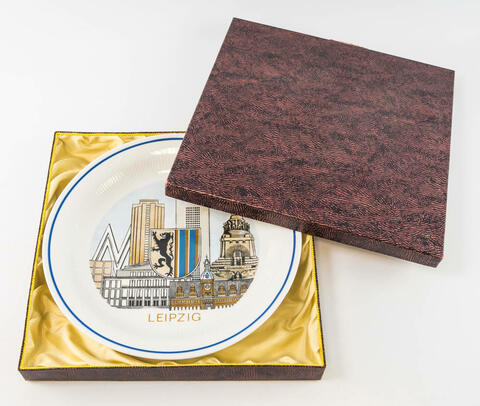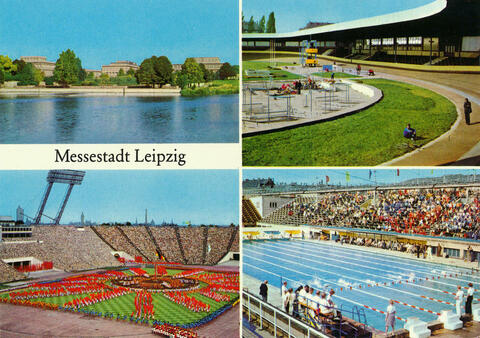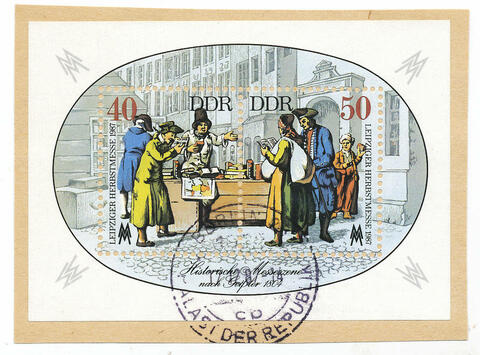From the collection
The Leipzig Trade Fair
The Saxon city of Leipzig has been considered an important trading city for centuries and, with over 850 years of history, it is one of the oldest trade fair locations in the world. As early as the Middle Ages, the city was considered a major transhipment centre at the crossroads of important trade routes. In the course of industrialisation in the 19th century and the expansion of transport routes with modern means of transport such as the railway, more and more industrially manufactured products were delivered to the trade fair city. This resulted in an increased shortage of space, and the city's warehouses and transshipment buildings were filled to bursting point. For this reason, the original goods fair was restructured into a sample fair at the end of the 19th century, so that traders and producers only presented samples of their goods and did not have to bring the entire merchandise with them. The change to a sample fair also changed Leipzig's cityscape, as numerous new fair buildings were erected.
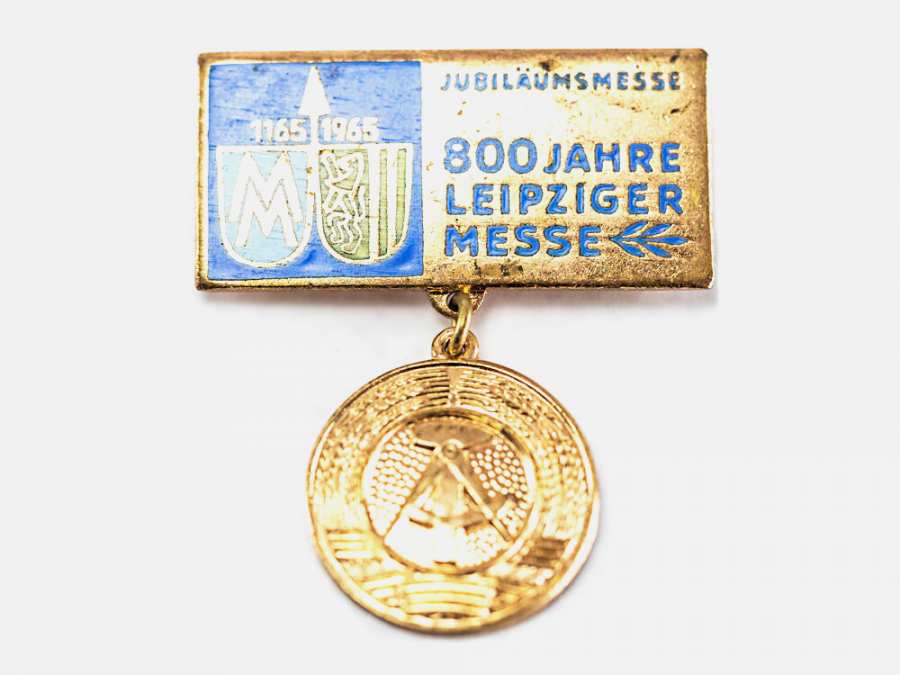
The Leipzig Trade Fair between the World Wars
The First World War considerably weakened and isolated the Leipzig location and the traditionally held spring and autumn fairs. In 1917, the artist Erich Gruner designed the logo that is still in use today with the distinctive two »M«s, one above the other, which stand for »Mustermesse« (sample fair). In the young Weimar Republic, however, the situation returned to normal and Leipzig developed into a world-renowned trade fair location in the late 1920s. Even in the early years under National Socialist rule, trade fair operations continued. In 1937, the city was even designated a »Reichsmessestadt« (Reich's trade fair ciry). However, trade fair operations came to a standstill in 1939, as the Second World War began with the invasion of Poland one day after the end of the Autumn Fair on 31 August 1939.
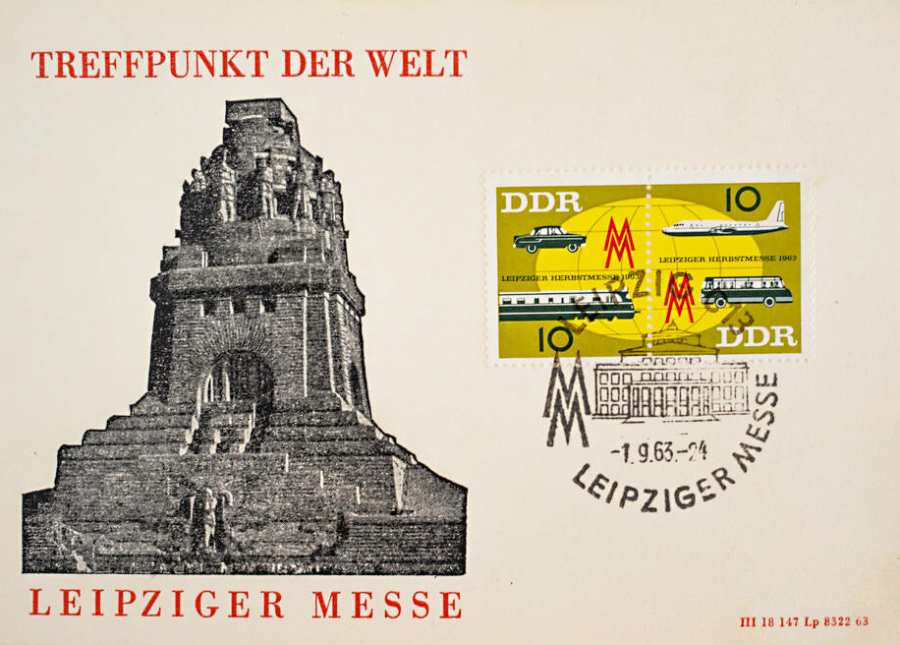
Demonstration of normality and efficiency
After the end of the war, Leipzig, like many other German cities, was destroyed by bombing. At first, it was impossible to think of holding a trade fair because the war damage was too extensive. Exactly one year after the end of the Second World War in Europe, on 8 May 1946, the doors of the first post-war trade fair, which was also called the »Peace Fair«, opened in Leipzig's Ring Messehaus. Although some West German exhibitors were also represented, the fair had a rather improvised character at the time, as industrial production in divided Germany was at rock bottom due to the destruction caused by the war. However, the rulers in the Soviet occupation zone, from which the GDR emerged on 7 October 1949, wanted to demonstrate normality and efficiency in their part of Germany with the early opening. After the tentative new beginning of the 1940s, the fair developed into an important centre for East-West trade in the following decade. The SED leadership used the Leipzig Fair every year to showcase its own production companies and was regarded internationally as the GDR's economic and political shop window. Until the 1970s, the Leipzig Fair offered the GDR the opportunity to compare its technical products with the »world standard« of Western manufacturers.
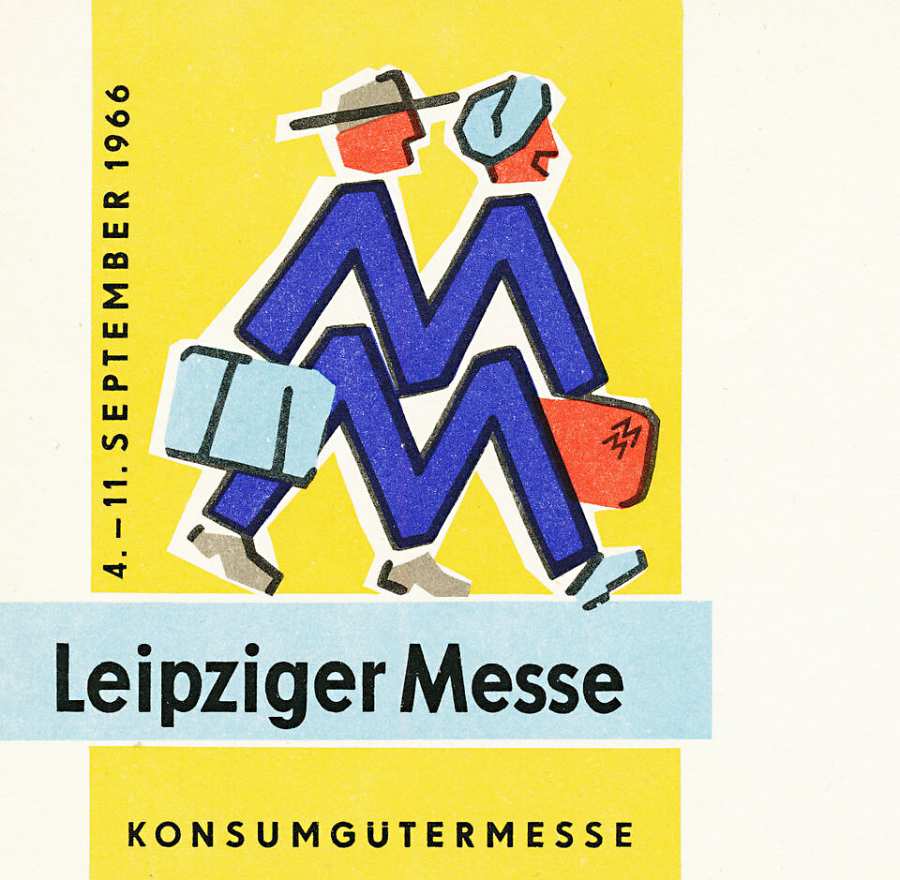
Leipzig in a state of exitement in and after the GDR
The fair quickly developed into a crowd puller, with visitor numbers levelling off at 600,000 annually in the 1960s. Of these, almost 90 per cent came from the GDR and only about 8 per cent from the Federal Republic or other western countries. The number of exhibitors at the time was around 10,000, who could use up to 300,000 m² of exhibition space for their products. For a fortnight each year, the city of Leipzig was in a state of exitement due to the large number of visitors. In order to monitor contacts between Western guests and the local population, numerous employees of the Ministry for State Security were on covert duty.
In the course of the political changes in 1989/90 and German reunification, the Leipzig Fair buildings were transformed into a limited liability company in 1991. Today, it hosts numerous well-known trade fairs on a new site outside the city and continues the centuries-old trade fair tradition of the Saxon city in a dignified manner.
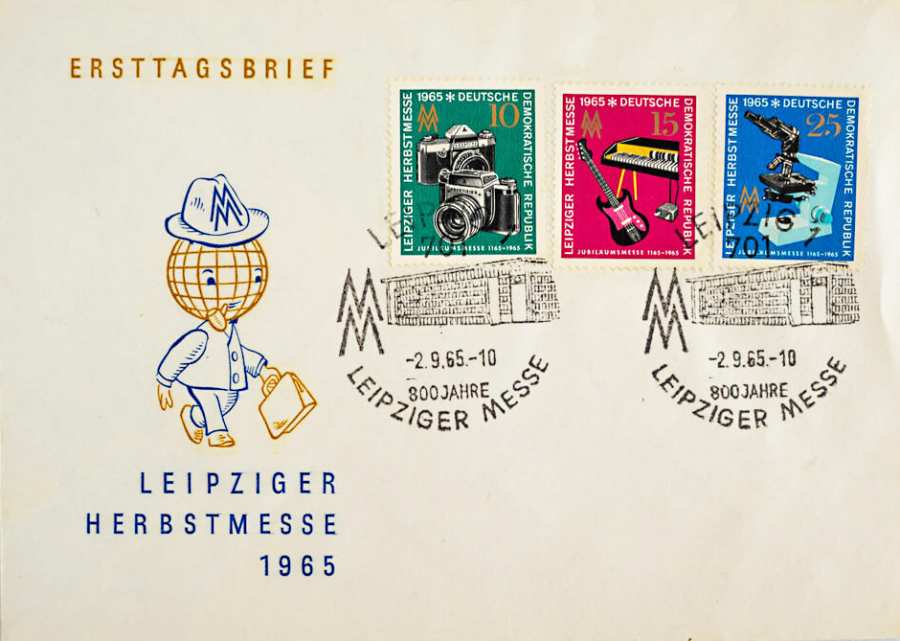
Objects of the Leipzig Fair
The collection of the DDR Museum contains numerous exhibits relating to the Leipzig Fair, including, of course, the famous »Leipziger Messemännchen«, which served as the mascot of the fair from 1964 onwards. It was designed by the GDR art prize winner and creator of the Sandman, Gerhardt Behrendt. The fair man represents a commercial traveller, the oversized head has the shape of a globe and stands for the international character of the Leipzig Fair. On his head, the fair man wears an elegant hat to match his suit of the same colour, and in his hand he holds a travel suitcase. A pipe is stuck in the corner of the popular figure's mouth. The colour scheme of the figure and its clothing is blue and yellow – the colours of the city of Leipzig.
